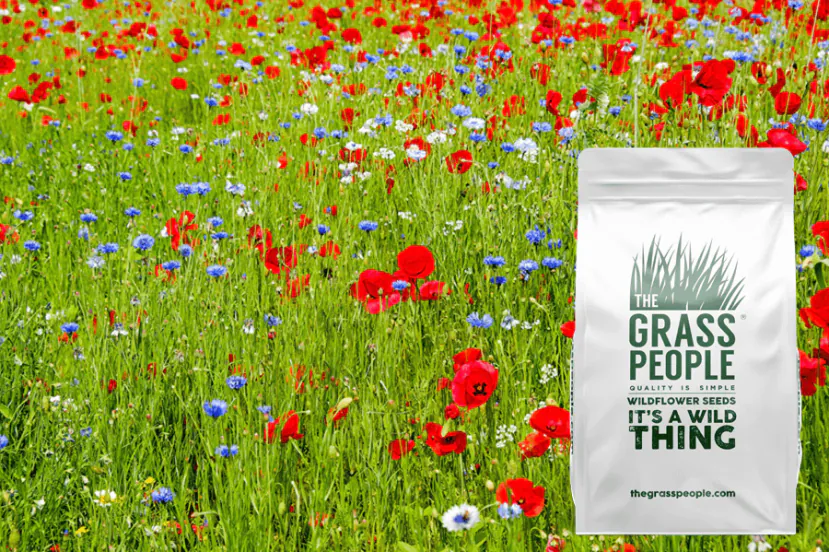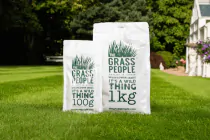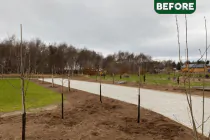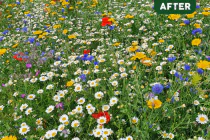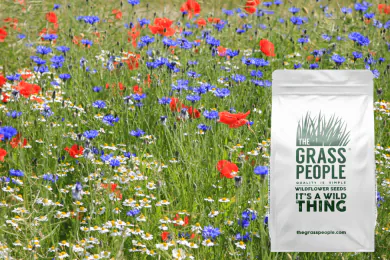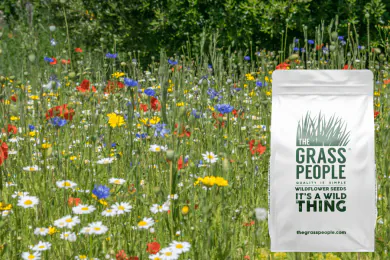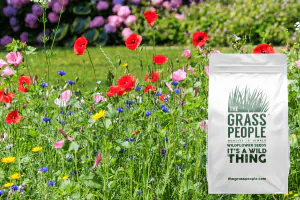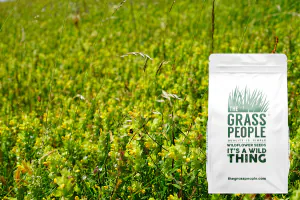Annuals Mix Wildflowers
- Contains the Nation’s favourite cornfield annuals
- Produces colourful blooms within months
- Can be added into pre-existing meadows for a pop of colour
Please refresh the page in 1 minute to see the next delivery time.
How much do I need?
Simply enter the length and width of the area, to calculate how much you need.
Product Description
Our Annuals mix contains 100% UK native cornfield annuals and RHS Plants for Pollinators wildflowers that bloom within months of sowing to create an instant pop of colour. You can sow this mix into a bed, border, pot or planter and enjoy it for up to 6 weeks in summer. Typically, annual wildflowers only have one showing, but if you follow our wildflower meadow management guide you can get them to return the following year after sowing.
Mixture Breakdown
June - August
What colour is it?Violet
Annual or Perennial?Annual
Latin NameCentaurea cyanus
DescriptionCornflower was previously considered a weed in amongst its cornfield annuals companions but is now accepted and widely praised as one of its finest! We're not surprised - who could dismiss those electric blue blooms?
May - September
What colour is it?Purple
Annual or Perennial?Annual
Latin NameAgrostemma githago
DescriptionCorncockle is a pretty purple wildflower with tall stems and full petals and is a bright addition to any annuals mix. It is currently rare and endangered.
June - August
What colour is it?Red
Annual or Perennial?Annual
Latin NamePapaver rhoeas
DescriptionCorn Poppy is a vibrant and bright addition to any meadow and easily recognisable and identifiable throughout the UK. Of course it has meaning for many, and also adds a colourful pop to any wildflower plot!
June - September
What colour is it?White / Yellow
Annual or Perennial?Annual
Latin NameAnthemis arvensis
DescriptionAlthough Corn Chamomile looks like a daisy, it is part of the cornfield annuals family. With its flat and almost-level surface it makes the perfect pit-stop for bees and pollinators.
June - October
What colour is it?Yellow
Annual or Perennial?Annual
Latin NameGlebionis segetum
DescriptionCorn Marigold is a bright ray of sunshine on a gloomy day. Its orange-yellow petals burst into life in June and last all the way through until October. Part of the cornfield annuals family, although this annual may have one showing - it’s a showstopper!
Usage Guide
● Remove any existing grass, plants or flora from the area where you plan to sow your wildflower seed. Failure to do this will produce poor results
● Further remove the top 5-10cm to reduce soil fertility
● Allow the area to cultivate for several weeks, and remove any weeds that may pop in the area during this time
● Do not be tempted to add top soil, compost or fertiliser to the area - wildflowers prefer low nutrient conditions
● After the cultivation period ensure to remove stones or any other debris and rake the area to create a fine, friable and level seedbed
● Scatter the seed at a rate of 5g per m2
● Rake the seed so that it is in amongst the soil
● Water the just-sown wildflower seed well
● If sowing in drought conditions, water as required to keep the area moist in the first 6 weeks after sowing
Read our full guide on how to manage your wildflower meadow here.
| Sowing Rate | 5g per m2 |
| When | For best results sow in March/April or in September |
Aftercare
End of year cut:
- We recommend doing this essential end-of-year cut in autumn.
- Your wildflowers are ready for their first cut when they have grown to 7cm and have gone to seedhead.
- This cut can be done using your lawn mower at its highest setting or using a strimmer.
Early spring cut:
- An early spring cut is ideal when your wildflowers are well-established.
- This early spring cut trims back meadow grasses and helps increase the density of the wildflowers.
- This cut also encourages wildflowers to grow better later that season.
- Cut before the end of April, or you may stunt their growth, and they could skip blooming that year.
Summer cut (optional):
- A cut between June and August can encourage the growth of wildflowers later in the season.
- Cut back to 7cm tall and remove the cuttings.
- This optional cut encourages new wildflowers to grow and flourish.
What to do with the cuttings (if you have annual wildflowers in the mix):
In dry conditions:
- If conditions will be dry for 5-7 days, you can let the cuttings lie on the ground so the seeds drop.
- Walk over, use a roller or shake the seedheads to encourage the seeds to fall and grow next season.
- Then remove the plant cuttings after a week and dispose of them in your garden waste bin.
In wet conditions:
- Lift the clippings if rainfall is forecast, and manually free up the seeds by crushing the seedhead to collect the seeds for replanting.
- When dry conditions return, scatter the seeds across your wildflower area.
- Alternatively, you can store your collected wildflower seeds in an envelope and replant them later.
For further reading, check out our guide on when and how often to cut a wildflower meadow.
The above photo depicts the variety of species you should expect to see in your wildflower display. Please note that certain species within this mix and all our wildflower mixes may become more abundant than others, and this varies based on the conditions in which they are sown. Taking this into consideration, your wildflower meadow will evolve and adapt year after year and change in appearance as certain species may become more dominant than others.
Product Questions
Product Questions
Our Annuals Mix is a great mix and is full of colour. These are quicker to establish than perennials and will bloom in the first year. Typically, they do not return the following year, making this mix perfect if you are looking for something temporary or trying a meadow for the first time.
Generally speaking, the annuals shouldn't return the following year, but that is not to say some won't make a reappearance. In August / September of the first year you have sown your wildflower seed, cut your wildflower sward to 7cm after flowering – you can do this by putting your mower on a high setting.
If you have annual wildflowers in your mix and you do not wish them to return the following year, remove the clippings.
If you want your wildflowers to return the following year - let them go to seed head, and manually assist their self-seeding by firming the seed heads into the soil. By doing this, your annuals will return the following year.
If sowing in Autumn, the wildflowers should start to bloom in springtime.
Peter
There is still time if you wish to sow now. You can expect to see the annuals appear 60-80 days after sowing, perennials will have a small showing but will take up to one year to fully establish. If you decide to wait and sow in Autumn, you should expect a showing in early spring next year.
For best results and for anything to establish and last, it is important to have the right sowing environment and an adequate seed bed. If you do sow without the correct depth and conditions, the flowers won't have established a secure, strong toot system.
If you would like to email us at [email protected], we would be more than happy to make a few suggestions so you can get the best from the meadow.
